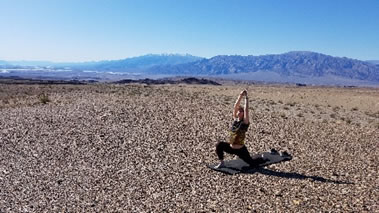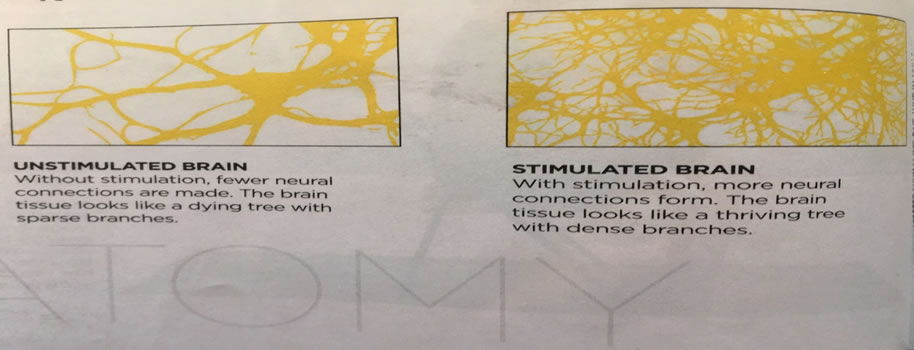A World Without Trash
Shared from article in National Geographic March, 2020 by Robert Kunzig
Kunzig
A world without waste sounds impossible, but the vision of a circular economy where we use resources sparingly and recycle materials endlessly- is inspiring businesses and environmentalists alike. Can we make it happen? Can we afford not to? We can look at existing technologies that other countries have implemented and build on that knowledge.
In Copenhagen, Denmark, an incinerator uses the latest technology to convert 534,000 tons of waste a year into energy to electrify 30,000 homes and heat 72,000. The plant doubles as a recreational destination, with an all-season ski slope, a tree-lined hiking and running trail, and a 280- foot climbing wall. Which is the world’s tallest.
Every year we transform more than 100 billion tons of raw material into products. Less than a quarter becomes buildings, cars, or other long-lasting things. Less than 10 percent cycles back into the economy. The circular economy movement aims to increase that number and reduce the enormous amount of waste.
The vast majority of inputs to the economy, 93 billion tons in 2015, are resources extracted from the Earth. Both finite (minerals, ores, and fossil fuels) and renewable ones (biomas). Two-thirds of the material flowing through the economy, 67.4 billion tons in 2015, gets emitted as pollution. The carbon from fossil fuels or other sources are disposed of as waste.
In Prato, Italy, where wool clothes have been produced since the 12th century, some 3,500 companies, employing 40,000 workers, process discarded textiles. The wool is sorted by color, washed, and shredded. It is then spun back into yarn.
Only one percent of textile waste is currently recycled into new clothing.
We can do our part by buying fewer, good quality pieces of clothing, donating and checking out local thrift stores for some unique treasures. We can all be conscious shoppers and make a difference. The goal is to use less and keep things longer. Waste is a design flaw. In nature, it doesn’t exist. A cradle-to-cradle vision is all products are ultimately broken down either as technical nutrients, which are made into new products or biological ones, which return to the soil.
The Neuroscience of Presence
Shared from Yoga Journal Mar/April 2020 by Ann Swanson
 Humans possess a unique superpower among those in the animal kingdom: their ability to evaluate the past and plan for the future. Unfortunately, this evolutionary advancement comes at an emotional cost-regret and worry. Both of these are often the result of not living in the moment. Research shows that the more time you spend mind-wandering, the less happy you’re likely to be. In fact, humans devote a whopping 47 percent of their waking hours to mentally time traveling.
Humans possess a unique superpower among those in the animal kingdom: their ability to evaluate the past and plan for the future. Unfortunately, this evolutionary advancement comes at an emotional cost-regret and worry. Both of these are often the result of not living in the moment. Research shows that the more time you spend mind-wandering, the less happy you’re likely to be. In fact, humans devote a whopping 47 percent of their waking hours to mentally time traveling.
Fortunately, you can develop present moment awareness through meditation. Recent advances in two key scientific areas of study-neuroimaging and neurochemistry-allow us to see the measurable brain changes that result from meditation and lead to improved cognition and mood. Staying in the moment helps your brain stay sharp as you age. Meditation strengthens neuroplasticity which stimulates the brain which helps prevent atrophy and functional decline. Positive effects have been documented in the brain scans of long-time meditators who practice for as little as 10 minutes a day.
 Meditation seems to slow the natural reduction of brain tissue that comes with aging and improve cognition and memory. In the pictures below, you can see the increased neural connectivity with minimal daily meditation. The photo on the right is the limbic system which is responsible for behavior, emotions, and survival instincts. Grey matter increases in the prefrontal cortex, improving focus and problem-solving. The hippocampus thickens, which boosts working memory and keeps you anchored in the present. Meanwhile, activity decreases in the amygdala, lessening the brain’s fear response.
Meditation seems to slow the natural reduction of brain tissue that comes with aging and improve cognition and memory. In the pictures below, you can see the increased neural connectivity with minimal daily meditation. The photo on the right is the limbic system which is responsible for behavior, emotions, and survival instincts. Grey matter increases in the prefrontal cortex, improving focus and problem-solving. The hippocampus thickens, which boosts working memory and keeps you anchored in the present. Meanwhile, activity decreases in the amygdala, lessening the brain’s fear response.

Neurochemistry
Your brain is capable of n aturally creating key chemicals that pharmaceutical companies synthesize in a lab. For example, serotonin helps regulate mood, social behavior, appetite, sleep, memory and more, Some antidepressants work by increasing the usable levels of serotonin in your brain. Meditation has also been shown to increase serotonin levels, without the side effects. Check out the chart below for a summary of measurable changes of neurochemistry from meditation.
aturally creating key chemicals that pharmaceutical companies synthesize in a lab. For example, serotonin helps regulate mood, social behavior, appetite, sleep, memory and more, Some antidepressants work by increasing the usable levels of serotonin in your brain. Meditation has also been shown to increase serotonin levels, without the side effects. Check out the chart below for a summary of measurable changes of neurochemistry from meditation.
Change Your Mind
Meditation literally changes your neural configurations. Research suggests that meditation can be effective as an adjunct therapy for depression, anxiety, trauma, chronic pain, cancer, heart disease, and more. Better yet, it can help prevent many issues before they start. Meditation cultivates the neurobiology of optimal health and resilience. There is reason this practice has stood the test of time and why there’s been an exponential growth of research on meditation in the past few decades.
The Planet is Taking a Deep Breath
The current situation has been a like a sci fi movie. Our lives have quickly been upended from our daily activities. The unknown is frightening and keeping our distance from family and friends is uncomfortable. Not knowing if we could be a carrier or a recipient of the virus is a dangerous situation. The unknown can bring a lot of anxiety. Money worries can be overwhelming. Let’s make the best of a massive time out.
A few positives that we can keep in mind. Less cars on the road around the world has shown significant drops in nitrogen dioxide. Levels in China dropped 35%. Europe has seen a dramatic drop in air pollution. The U.S. is starting to see similar results. New York has had the worst air pollution in the country. The city is experiencing a huge relief in air quality. Venice, Italy which just weeks ago was overrun with tourists is now quiet. The canals are usually filled with gas powered boats. The water is clear for the first time in many years. A dolphin was spotted recently for the first time in 60 years.
Many workers around the world are telecommuting. Less auto accidents and commute fatigue. Less animals are being killed on the roads. Schools are figuring ways to keep students on track by creating an infrastructure for remote learning. I have heard from people who actually have noticed more money in their bank account. We are noticing how much we spend on eating out and buying coffee drinks. There is a pause in those habits that we can reflect on.
I see more families spending time together out for a walk or bike ride. People I talk to are taking care of home projects or hobbies. I have made a list of home activities that I never seem to get to. It is also a good time to think about our overall health. How resilient do we feel to overcome a virus? It is a good time to review our healthy habits and strive for increasing our physical health. At the same time, we can focus on our mental health. Let’s take this time out as an opportunity to practice meditation and replace fear with positive thinking. This will help us get through this life altering moment in time. Practice slow deep breathing to increase lung capacity and strengthen our mental resilience

If you take responsibility for yourself, you will develop a hunger to accomplished your dreams

